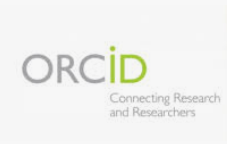Guidance for families of hyperactive children to enhance their individual development
Keywords:
hyperactivity, family orientation, individual development.Abstract
Affecting approximately 5 % of the child population, hyperactivity becomes one of the most prevalent disorders in this age group, associated with disorganization in the cognitive and behavioral sphere that manifests itself in all areas of life. The objective of this paper is to design an orientation strategy for families of hyperactive children for their control and development under the guidance of health personnel in order to enhance their individual development and harmony in their familial environment.Downloads
References
1. Martínez C. Trastorno por déficit de atención con hiperactividad. En O. Rodríguez. Salud mental Infanto-Juvenil. La Habana: Editorial Ciencias Médicas; 2008.p.67-69.
2. Ask Mayo Expert. Attention-deficit/hyperactivity disorder. Rochester, Minn: Mayo Foundation for Medical Education and Research; 2017.
3. Mondal S.Attention-deficit/hyperactivity disorder (ADHD).TheChild and Newborn [Internet].2021 [cited 26/1/2022];25(1-4).Available from: http://www.wbap.in/data/Child_Vol_25_No.1-4.pdf#page=23
4. Centers for Disease Control and Prevention. My child has been diagnosed with ADHD ― Now what[Internet].2021. Available from: https://www.psycom.net/adhd-children-diagnosis.
5. Voight RG. Attention-deficit/hyperactivity disorder.In: American Academy of Pediatrics Developmental and Behavioral Pediatrics. 2. ed. Itasc: American Academy of Pediatrics; 2018.
6. Rajah N, Bamiatzi V, Williams N. How childhood ADHD-like symptoms predict selection into entrepreneurship and implications on entrepreneurial performance[Internet].2021[cited 28/1/2022];36(3). Available from:https://www.sciencedirect.com/science/article/abs/pii/S088390262100001X
7. National Resource Center on ADHD. For parents and caregivers[Internet]2015[Accessed 28/1/2022]. Available from: https://chadd.org/for-parents/overview2022.
8. Menéndez Benavente I. Trastorno de déficit de atención e hiperactividad: clínica y diagnóstico. Rev.psiquiatr. psicol niño adolesc. 2001;4(1):92-102.
9. Quintero Olivas D K, Romero Pérez E M, Hernández Murúa J A. Calidad de vida familiar y TDAH infantil. Perspectiva multidisciplinar desde la educación física y el trabajo social. Rev caf UCM [Internet].2021[citado 26/1/2022];22(1).Disponible en: http://doi.org/10.29035/rcaf.22.1.1
10. Bello Escamilla N, Rivadeneira J, Concha Toro M, Soto Caro, A y Díaz Martínez X. Es-cala de Calidad de Vida Familiar: validación y análisis en población chilena. Universitas Psychologica[Internet].2017[citado 26 /1/2022];16(4).Disponible en:https://doi.org/10.11144/Javeriana.upsy16-4.ecv
11. Oliva Feria A Y, Mancebo Ayala R, BetancourtAldana G. La orientación familiar para mejorar las manifestaciones del trastorno por déficit de atención con hiperactividad en los escolares. Santiago[Internet].2017[citado26 /1/2022];(144).Disponible en: https://santiago.uo.edu.cu/index.php/stgo/article/view/2908
12. Ricardo Gato A. La orientación a familias con niñas y niños diagnosticados con trastorno por déficit de atención con hiperactividad[tesis]. Holguín: Universidad de Holguín. Facultad de Ciencias de la Educación. Departamento de Pedagogía- Psicología; 2018.
13. Ochoa J, Vintimilla M. Estrategias Terapéuticas para padres de niños de 6 a 10 años con Diagnóstico de TDAH[tesis].Azuay: Universidad Azuay;2016.
14. Esteban Rodríguez L. Los beneficios de la terapia cognitivo-conducta en niños con TDAH escolarizados en centros ordinarios de Alicante[Internet].Alicante:UNIR;2017[citado 28/1/2022].Disponible en:https://reunir.unir.net/bitstream/handle/123456789/6458/ESTEBAN%20RODR%C3%8DGUEZ,%20LAURA.pdf?sequence=1
Downloads
Published
How to Cite
Issue
Section
License
DECLARACIÓN DE AUTORÍA Y BUENAS PRÁCTICAS (i)
A: Comité editorial Revista Humanidades Médicas
Título del trabajo:
DECLARACIÓN DE ORIGINALIDAD Y CARÁCTER INÉDITO DEL TRABAJO
- Este trabajo es original e inédito, no se ha enviado ni se enviará a otra revista para su publicación, salvo que sea rechazado.
- Ninguno de los datos presentados en este trabajo ha sido plagiado, inventado, manipulado o distorsionado.
-Los datos originales se distinguen claramente de los ya publicados.
- Se identifican y citan las fuentes originales en las que se basa la información contenida en el manuscrito, así como las teorías y los datos procedentes de otros trabajos previamente publicados.
- Se cita adecuadamente en el artículo la procedencia de las figuras, tablas, datos, fotografías, etc., previamente publicados, y se aportan los permisos necesarios para su reproducción en cualquier soporte.
- Se ha obtenido el consentimiento de quienes han aportado datos no publicados obtenidos mediante comunicación verbal o escrita, y se identifican adecuadamente dicha comunicación y autoría.
AUTORÍA
Las personas que firman han brindado sus:
- Contribuciones sustanciales a la concepción y el diseño.
- Contribuciones sustanciales a la adquisición de datos, su análisis e interpretación.
- La redacción del artículo o la revisión crítica del contenido intelectual.
- La aprobación final de la versión que se propone para la publicación.
- No se ha omitido ninguna firma responsable del trabajo y se satisfacen los criterios de autoría científica.
OBTENCIÓN DE DATOS E INTERPRETACIÓN DE RESULTADOS
- Quienes firman este trabajo han evitado cometer errores en su diseño experimental o teórico, en la presentación de los resultados y en su interpretación. En caso de que descubrieran cualquier error en el artículo, antes o después de su publicación, alertarán inmediatamente a la Dirección de la revista.
- Los resultados de este estudio se han interpretado objetivamente. Cualquier resultado contrario al punto de vista de quienes firman se expone y discute en el artículo.
AGRADECIMIENTOS
- Se reconocen todas las fuentes de financiación concedidas para este estudio, indicando de forma concisa el organismo financiador y el código de identificación.
- En los agradecimientos se menciona a las personas que, habiendo colaborado en la elaboración del trabajo, no figuran en el apartado de autoría ni son responsables de la elaboración del manuscrito.
CONFLICTO DE INTERESES
- En el apartado de observaciones los firmantes del texto informan de cualquier vínculo comercial, financiero o particular con personas o instituciones que pudieran tener intereses relacionados con el trabajo propuesto.
- Los autores declaran que no poseen conflicto de intereses respecto a este texto.
DERECHOS Y DISTRIBUCIÓN
- La revista Humanidades Médicas distribuye en Internet la versión del artículo bajo los términos de una Licencia Creative Commons (CC) 4.0. (CC BY-NC-SA 4.0) Atribución-No Comercial-Compartir Igual 4.0 Internacional.
Autor/a principal y de correspondencia: ________ Firma: ______________________
Coautor/a: _____________________________
Firma: ______________________
Coautor/a: _______________________________
Firma: ______________________
Coautor/a: _______________________________
Firma: ______________________
(i)Tomado y adaptado de: Declaración de autoría, buenas prácticas y cesión de derechos. CSIC [Internet]. 2017 [citado 15 May 2019];2. Disponible en: http://revistas.csic.es/public/guia_buenas_practicas_CSIC.pdf y http://revistas.csic.es/public/formulario_declaracion_autoria.pdf


